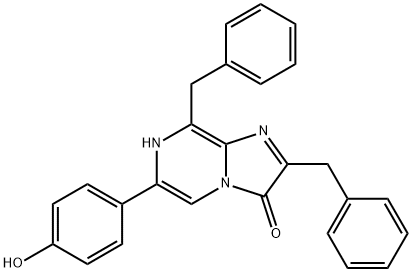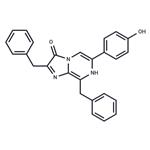Coelenterazine-h (50909-86-9) may be used as a substrate in gene reporter assays, live cell assays, and biochemical assays (ELISA, BRET etc). Renilla luciferase catalyzes coelenterazine oxidation by oxygen to produce light. Coelenterazine-h produces 10-fold higher light output than native coelenterazine. Coelenterazine-h also undergoes autoluminescence, which is enhanced by superoxide anion and peroxynitrite in cells.
Coelenterazine h, is a derivative of Coelenterazine (C636000), and iis more sensitive to Ca2+ than is the native complex, thus providing a valuable tool for measuring small changes in Ca2+ concentrations.
ChEBI: Renilla luciferin is a member of phenols and an imidazopyrazine. It has a role as a luciferin. It derives from a hydride of an imidazo[1,2-a]pyrazine.
Coelenterazine is an imidazopyrazinone derivative. It is a substrate for bioluminescence in many luminous marine organisms.
10 times higher luminescence intensity than native coelenterazine.
1) Shimomura?et al. (1989),?Semi-synthetic aequorins with improved sensitivity to Ca2+ ions; Biochem. J.,?261?913
2) Nakajima-Shimada?et al.?(1991),?Monitoring of intracellular calcium in Saccharomyces cerevisiae with an apoaequorin cDNA expression system; Proc. Natl. Acad. Sci. USA,?88?6878
3) Inouye?et al. (1992),?Monitoring gene expression in Chinese hamster ovary cells using secreted apoaequorin; Anal. Biochem.,?201?114

